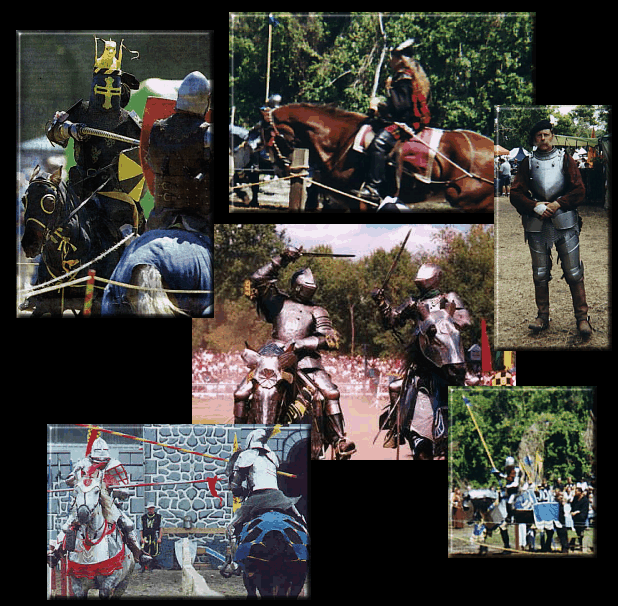|
|
|
|
|
|
| They may be Performers but take their Jousting Very Seriously |

The Legend of The Joust
The origins of jousting are
believed to be in classical Rome, but the "sport" rose to its greatest
popularity in Europe by the 1400's. It all evolved from mock battles in which
knights on horseback, assisted by foot soldiers, formed into teams and charged
at each other in some wide meadow. The result was a "melee" (the word hasn't
changed in a millennium) of shattered lances, clanging swords, flailing arms and
legs - astride and afoot - that went on all day and into the night. The earliest
recorded melee was in 1066 A.D., though mock combat had probably been around for
centuries by then.
At first, the battles served
more to hone fighting skills than to provide popular diversion. But in peaceful
times, a knight needed a way to retain his skills. The Jousts were great
money-makers for the victors; instead of claiming mere points, the winning team
held the losers for ransom, often accepting their horses and armor as payment.
By the middle 1200's, the joust
was the favored way to prove which of two (or more) knights was better. The
joust became very civilized and formalized, though severe injuries were common.
Most contests were for pleasure in which a winner was declared winner on the
basis of points, but some were fought to the death. In the sporting version, the
knights' swords were dulled and their lances tipped with little crowns to
prevent their penetrating a joint in the armor. Also the lances were
deliberately weakened, a precaution still in effect today.
The training of a knight
included spearing a small ring on stanchions or with a mock opponent that sat on
a revolving pedestal. Ring jousting is today the state sport in Maryland.
Modern re-creations of
Renaissance era jousting tournaments are depictions of historical events, coming
from a time of high ideals, noble causes and grand chivalry.
| Thank You For Visiting MM Copyright OurRealm June 2001 |